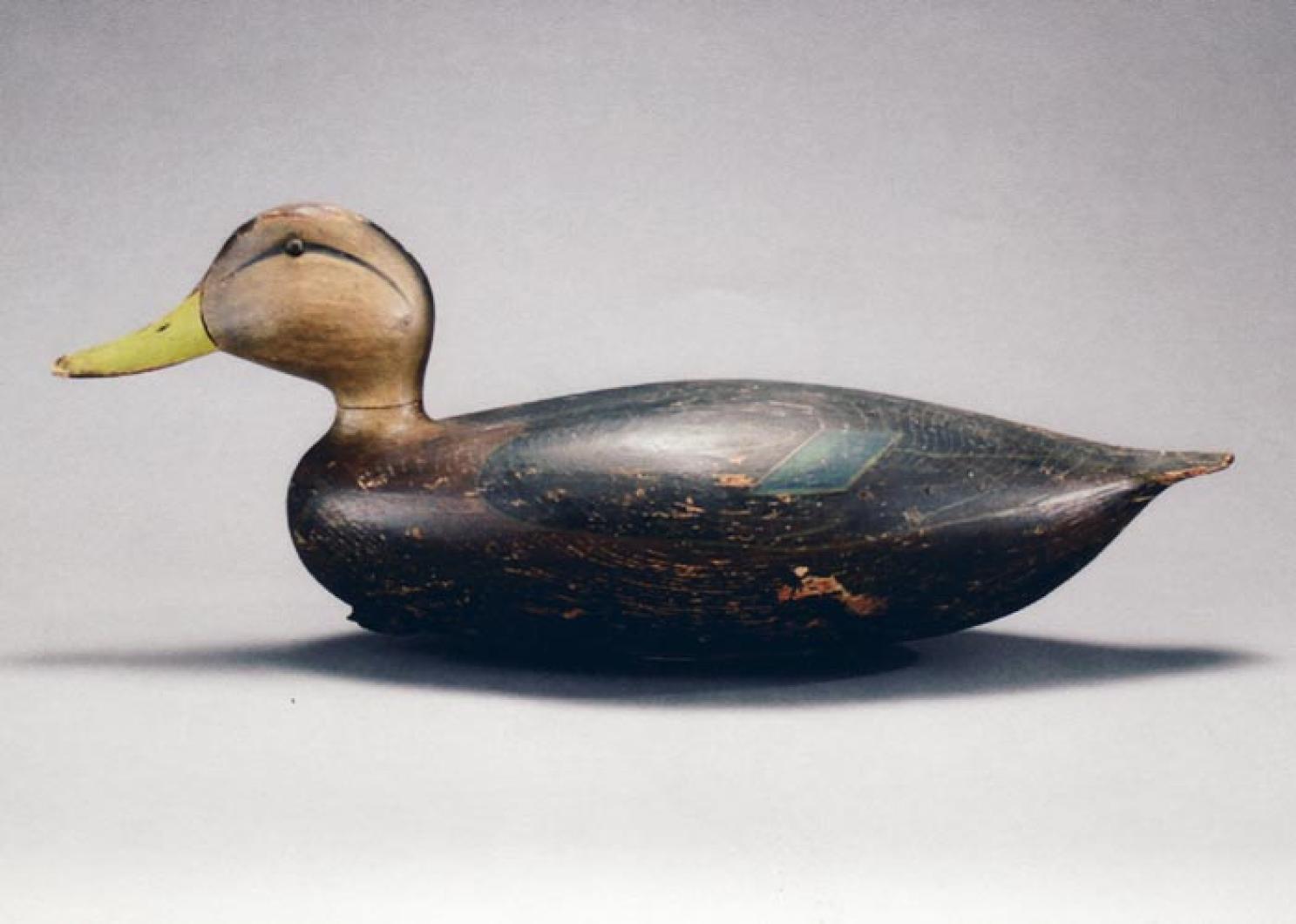Just what does a duck see when peering down from the sky at a decoy floating on the water? Sometimes it sees, to its detriment, a friend to nestle down with. Other times it perceives the shoddy workmanship; the chipping paint, overlarge eyes or lilt of tail far removed from the likes of its brethren. The duck in this case keeps right on flying.
And then, perhaps just once in many, many decades, there is a vision floating out there on the water. A vision of a decoy so perfect and unique that the wild duck reaches deep into its feathers and pulls out $22,425.
This is, in a sense, what happened recently at the spring decoy auction in Chicago.
The decoy in this case was a rare black duck handcrafted by Benjamin Pease of Oak Bluffs. The duck was in fact a person, a collector of decoys who remains anonymous.
Mr. Pease lived on the Island from 1866 to 1938. He was an avid carpenter, farmer and fisherman who carved decoys for his own use. In addition to being beautiful the black duck was functional.
For those unaware, the market for antique decoys is a robust one. Guyette and Schmidt, the world’s leading decoy auction firm which represented the Pease decoy, has logged over $127 million in sales since it opened its doors in 1984. The Pease decoy was not the biggest sale at the recent acution. A rare swan went for $186,500.
The Vineyard would seem a perfect nesting ground for antique decoys. Duck ponds aplenty and so many rugged Island ancestors handy with a knife and gun. Who knows how many barns and attics are stocked with cash cows masquerading as carved wood mallards? Guyette and Schmidt aim to find out.
Representatives of the firm are traveling to the Island on May 16 to offer free appraisals and take consignments for their July 19 and 20 decoy auction in Portsmouth, N.H.. Anyone looking for more information on the firm and the rare decoy market can contact them at 410-924-5678 or visit decoys@guyetteandschmidt.com.




Comments
Comment policy »